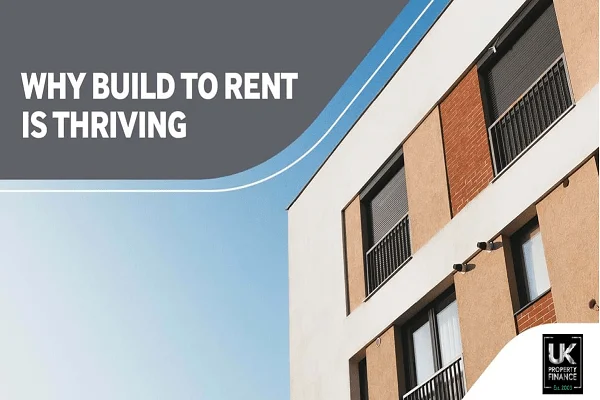Buy-to-Let Changes Landlords Need to Know in 2022
Over the next few months, buy-to-let landlords are to be hit by a raft of tax changes. From stamp duty rates to capital gains tax to buy-to-let tax relief alterations, things look set to become even more difficult for BTL landlords running businesses in the UK.
Income Tax Rates 2022
The current personal allowance (the amount you can earn before paying income tax) is up £70 from last year, now standing at £12,570. This is to remain fixed until 2027 at the earliest.
For this tax year, BTL landlords generating income between £12,571 and £50,270 will be taxed at a rate of 20%, those earning above this £50,270 threshold will be subject to 40% taxation, while the £150,000 threshold paves the way for 45% or higher rate taxation.
Capital Gains Tax
One welcome change to BTL legislation is the extension of the time landlords have to report and pay capital gains tax, following the sale of a property.
Reduced significantly from 22 months to just 30 days in April 2020, the grace period has now been doubled to 60 days.
Increases in capital gains tax had been predicted for some time, but are set to remain unchanged for the time being.
Tax Credit
For this tax year, BTL business owners will again be able to claim a tax credit worth 20% on interest payments, rather than deducting mortgage costs from their rental income.
It has now been five years since the government introduced its controversial tax changes for BTL landlords, gradually reducing mortgage tax relief each year until it was wiped out entirely last year.
Companies House data suggests that more BTL landlords set up limited companies when purchasing new rental properties last year than ever before, in order to avoid higher rate personal income taxation by instead paying corporation tax at a fixed rate of 19%.
Buy-to-Let Stamp Duty
All stamp duty incentives for BTL property purchases in England have now ended, which up until October 2021 provided buyers with the opportunity to save (on average) £2,000.
As of now, normal stamp duty rates have resumed for investors in England, as follows:
| Property price | Stamp duty rate | |
| £0 — £125,000 | 3% | |
| £125,001 — £250,000 | 5% | |
| £250,001 — £925,000 | 8% | |
£925,001 —
£1.5 million |
13% | |
| £1.5 million + | 15% |
Stamp duty obligations differ slightly for BTL property purchases in Scotland and Wales.
Other Buy-to-Let Regulation Changes
Along with the alterations to tax obligations outlined above, several further regulatory changes for BTL landlords have been outlined by the government.
Key proposals for the year ahead (part of the Levelling Up White Paper published by the government) include:
- A national landlord register
- the end of Section 21 evictions
- a minimum standard for all rental properties
- more fines and bans for rogue landlords
Legislation is also set to be introduced on the installation of CO2 alarms in BTL properties, along with the requirement for rental homes to meet elevated energy efficiency standards by law.
Average Rate Growth Hits Five-Year High, ONS Reports
Monthly rent prices are increasing faster than at any time recorded since February 2017, new figures from the Office for National Statistics suggest. A further 2% increase in England was noted in the year leading up to January, while rents in Scotland were up 2.6% during the same time and 1.4% in Wales.
Last month, the average cost of renting a home in the UK reached a new high of £969 per month.
Speaking on behalf of Hargreaves, senior personal finance analyst Sarah Coles commented on the worrying trend of already cash-strapped renters facing even bigger financial challenges.
“Rents are rising faster than any time in the past five years, forcing tenants to choose between squeezing their spending even harder or uprooting their lives,” she said.
“Either way, they’ll end up worse off.”
East Midlands records the fastest growth in the UK
The fastest increase in private rental costs was noted in the East Midlands, up around 3.6% year-on-year. Despite being home to the UK’s most expensive rental properties, the slowest growth over the same period was recorded in London: an increase of just 0.1%.
With no let-up in sight, experts are forecasting further rent hikes for the foreseeable future, at least.
“It looks like rises are set to go further too,” added Coles.
“Those who can’t stretch their finances to cover their costs face the horrible upheaval and expense of moving home. If their current landlord withholds any of their deposit, they’ll have to find more cash to cover this, on top of the moving costs themselves, which means they’ll be worse off, whatever they do.”
“The Royal Institution of Chartered Surveyors research found that a slide in the number of properties for rent and another rise in tenant numbers are filling agents with confidence that rental prices will be on the rise for months or even years. It expects rent to rise to an average of 5% over the next five years.”
A further blow to prospective homeowners
With the housing sector maintaining its record-breaking momentum built up over the past 12 months, average property prices continue to price millions of would-be buyers out of the market entirely.
Over the course of the year leading up to January, average house prices in England hit a new high of £293,000, while the average cost of purchasing a home in Wales hit £203,000. Across the UK, the average market value of a home is now £275,000, the highest in history.
Alan Fitzpatrick, vice president of lending operations at mortgage specialist Hibito, explained the significance of this year-on-year increase.
“This ONS data reflects the year of the Stamp Duty Holiday, from the first deadline in March, the extended deadline in June, and the lower threshold, which was payable until the end of September,” he said.
“To put this incredible one-year price rise into more context, £27,000 would be the 2022 take-home salary post-tax of someone earning £35,000 (more than the UK average full-time salary, which is £31,285).”
Looking ahead, Quilter mortgage experts see an eventual slowdown occurring, but not on such a level as to prove any real value to struggling buyers or renters.
“Any hopes of a downward tick in house prices have once again been dashed,” she said.
“While a reduction in house prices has not yet materialised, it seems inevitable that there will be a slowdown during the coming year, and there are many factors currently at play that could contribute.”
“While the scales of supply and demand remain firmly tipped in favour of the nation’s home sellers, there’s a good chance that the high rate of house price growth seen during the pandemic will now subside, replaced by more incremental gains during the year ahead,” he said.
The UK Construction Industry: The Biggest Growth Seen for Six Months
According to the PMI (HIS Market/CIPS UK Construction Purchasing Managers’ Index), the construction industry across the UK has grown at its quickest pace over the last six months, with the demand for more developments going through the roof.
Data showed an increased growth of 56.3 in the first month of the year, up from 54.3 in December 2021, indicating a strong start to 2022.
The last year has seen significant growth month on month, with figures above 50.0 indicating an expansion of the construction industry.
The report posted that, due to continuing haulage and delivery issues, as well as shortages in construction staff, there have been significant delays in receiving goods from suppliers.
The report added: “However, the peak phase of supply chain difficulties appears to have passed as the latest downturn in vendor performance was the smallest since September 2020.”
When looking at the individual areas of the development industry, it was noted that the house building sector showed the slowest increase in growth in the previous four months with figures of 54.3, while civil engineering stood at a growth of 53.2, but the best performer at 57.6 was commercial development.
Tim Moore, IHS Market Director, said: “Residential work increased at one of the slowest rates since spring 2020, which is an early sign that cost of living concerns and rising interest rates could start to dampen the post-lockdown surge in spending.”
Brokerage XTB market analyst, added: “The UK construction sector continued to gain momentum after a difficult end to 2021 thanks to an improvement in commercial activity, which helped offset a weak rise in house building.
“Improvements were also helped by a drop in cost inflation, which fell to a 10-month low thanks to an easing of supply issues, which have been affecting the sector for months.
“As a result, commercial work helped construction growth reach a six-month high, but with supplier lead times continuing to lengthen in January as staff shortages and a lack of haulage availability hindered deliveries, the situation continues to be uncertain.”
On the 3rd of this month, the B.O.E.’s Monetary Policy Committee increased the base rate from 0.25 to 0.5 in an attempt to combat the increasing inflation rate. The current inflation rate is 5.4%, which is predominantly due to the massive price hikes in gas and electricity. Inflation currently exceeds the Bank of England’s target by a massive 2%. The inflation rate is expected to hit its peak at 7.25% in April, which is approximately 2% higher than was predicted back in November 2021.
Build-to-Rent Rivals Buy-to-Let as Demand for Rental Property Increases
The hot topic of conversation among investors and developers at the moment is the exponential growth of the build-to-rent sector over the last few years. With the ever-increasing demand for rental properties, it isn’t surprising that this niche area of the property market has really taken off.
Up until now, the build-to-rent industry has been mainly led by London, but there are many regional towns and cities that are following suit, leading to a prediction by Savills that the size of the sector will double over the next few years.
Build-to-rent developments are giving the buy-to-let market some serious competition as they are tailored to suit the needs of today’s typical renter, often offering facilities that wouldn’t be seen in a traditional BTL property.
These BTR developments tend to be backed by institutional investors; however, there are always opportunities for individuals to invest in these projects.
The BPF (British Property Federation) has been analysing the performance of the build-to-rent market in order to report on its importance in tackling the housing shortage for UK renters.
While the sector has previously been more predominant in London, there is a significant increase in investment into BTR developments in other areas of the UK, particularly in the North. The last twelve months have seen 13,527 new homes currently under construction in regional cities, which is three times the number seen in London.
BPF director of real estate, Ian Fletcher, says: “The build-to-rent sector continues to expand rapidly, and in 2021 we started to see signs that delivery across the regions is beginning to outpace London.
“It is not just about increasing housing provision; it is a major economic driver, helping attract and retain skilled workers and serving as a catalyst for urban regeneration.
“The strong growth of the BTR sector across the regions will support the government’s levelling-up initiative and help revitalise town and city centres.”
The growth of the build-to-let sector can be mainly attributed to the desperate need for affordable rental property, as demand is significantly higher than supply. With more people taking on mortgages later on in life or deciding that they prefer the flexibility that the renting world offers, it can be safely predicted that the market for BTL will continue to grow in strength.
Buy-to-let developments are typically looking at long-term residents when it comes to the facilities that they offer. For example, communal outside spaces, workspaces, gyms, and other conveniences would suit today’s modern living, particularly for people who work from home.
Data released by BPF shows 70,785 buy-to-rent units in the UK, an increase of 26% from the previous year. 141,215 BTR properties are under construction or currently being planned, which is an increase of ten thousand since 2020.
Manchester, Sheffield, Birmingham, and Liverpool have seen a year-on-year rise of 27% in buy-to-let properties under construction. This is an increase of around 26,820 as of the last quarter of 2021.
Jacqui Daly, a director of residential research at Savills, says: “The geographic spread of build-to-rent shows that many more local authorities are beginning to understand the need for new rental stock, and planning consents are rising as a consequence.
“At the same time, BTR is becoming hugely competitive for investors, with a record level of capital deployed in the sector in 2021. If investors are able to find markets and stocks to invest in, we expect delivery in the sector to double within a few years.”
Another vital advantage of the growth of the build-to-let market is the positive impact it can have on the environment, as developments are designed to support the government’s ESG (environmental and social governance) targets.
Robert Sloss, group chief executive and founder of HUB Residential, says: “City living in well-designed buildings can significantly reduce residents’ carbon footprints, so it is encouraging that metropolitan BTR is increasingly in demand across the country. We want to see an intelligent and measurable approach to carbon reduction and ESG.”
Cutting Mortgage Costs to Combat Rising Inflation
Property owners who are finding it increasingly difficult to keep up with mortgage payments due to the high inflation rates are being actively encouraged to remortgage in order to bring down monthly mortgage payments.
According to a report released by the Joseph Rowntree Foundation, the rising price of energy is set to hit the poorest hardest, with households looking to spend around 18% of their income on gas and electricity after April this year.
To add even more stress to families, the energy price cap set is about to rise in conjunction with an increase in national insurance contributions. With inflation at a thirty-year high, services and goods are going to become increasingly expensive as we move through 2022.
According to L&C Mortgages, property owners will find that their mortgage repayments will be around seven times that of their energy bills, and as such, they are encouraging homeowners to look at changing their mortgage in order to reduce monthly outgoings.
David Hollingworth from L&C Mortgages commented: “It’s easy to focus on the costs that are climbing rapidly, like energy bills, and many homeowners will feel the pinch due to the price cap rise in April when council tax and national insurance changes will also begin to bite.
“Many of these elements are out of our control, but the mortgage is often a substantially higher outgoing and could offer a silver lining for homeowners.
“Fixed-rate mortgages offer a chance to save thousands for those that have drifted onto a lender’s standard variable rate.
“Cutting the biggest household bill could offer savings that mitigate the inevitable increase in other costs but also give the chance to shelter payments from any further interest rate rises.”
An analysis by L&C Mortgages shows families have an average monthly mortgage cost of around £900 and average energy costs of £118. Energy costs are expected to rise by approximately 50% over the coming months, and it is suggested that reducing monthly mortgage payments could significantly help in keeping monthly household outgoings down.
There has already been a hike in mortgage interest rates in response to rising inflation. Some lenders have passed the base rate increase on to SVR (standard variable rate) clients. This means that should a homeowner decide to remortgage from an SVR mortgage with a rate of 3.91% to a fixed mortgage rate of 1.36%, they could potentially save themselves around £2,200 per annum. A decrease of as little as 0.65% on mortgage interest could completely offset the effect of rising gas and electricity bills.
With inflation, energy costs, and mortgage rate increases guaranteed to put most families in the UK under immense financial pressure, changing to a low fixed-rate mortgage could be the perfect solution to alleviating some rising monthly costs.
Bridge Loans for Bad Credit Applicants
Raising funds for a property purchase for buyers and developers with a less-than-perfect credit history can prove to be quite challenging. Lenders offering traditional mortgages are cautious about approving loans to clients with previous financial issues as they are viewed as high-risk.
For those in this situation, bridging finance is a viable option to consider. But can you get a bridging loan if you have bad credit? In most cases, the answer is yes!
A bridging loan is a short-term, secured loan, usually 12 months, that is fast to arrange and is paid back in full at the end of the loan term, as set out by an exit plan. The exit plan assists the lender in assessing the suitability of the applicant and will have a significant impact on whether the loan is approved or not. So, for example, if a buyer is planning on paying the bridging loan with a mortgage at the end of the term, this may be a red flag for the lender as the chances of a buyer with credit problems being accepted for a mortgage may be low, and therefore the risk is high.
Not all lenders are willing to lend to bad-credit customers, so it is imperative that you only approach the ones that are. A competent, all-of-market broker will be invaluable when it comes to finding the right lender for a buyer’s individual circumstances.
Under what circumstances can I apply for a bridging loan?
Lenders who offer loans to clients with credit rating issues typically accept the following situations:
- Low credit score or no credit record at all
- Mortgage arrears
- Late payments
- Individual Voluntary Arrangement and DMPs (Debt Management Plan)
- CCJs (County Court Judgements) and defaults
- Repossession
- Bankruptcy
What are the eligibility criteria for bad credit bridging finance?
Although a credit check will be done, lenders will look at many other factors when considering an application:
- Exit strategy: This is important as it will indicate to the lender whether the loan can realistically be repaid.
- Security: This is collateral offered by the buyer that can be used to offset the loan if repayments are not made. The greater the security offered, the more funds can be raised.
- Business plan: If the loan is for development or commercial purposes, lenders will need to see a viable business plan.
- Experience: For developers and investors, this experience will give the lender more confidence in their ability to complete the project successfully.
- Deposit: The size of the deposit will have an impact on a successful application. The bigger the deposit, the better, as you will be offered more competitive interest rates. The majority of lenders will require a 30% to 35% deposit.
Only a few specialist lenders will accept non-standard strategies, which can include circumstances such as repaying the loan through inheritance or investment.
Should I use a broker for adverse credit bridging loans?
Consulting an experienced broker will significantly improve your chances of being accepted for a bridging loan. Brokers are likely to be able to easily identify the lenders who will be willing to say yes, which is important as a declined application from the wrong lender may further impact your credit record.
Mortgage Approvals at Lowest Level Seen for Sixteen Months
October 2021 saw the lowest level of mortgage application approvals since the middle of 2020, primarily due to the end of the stamp duty holiday, according to figures released from the Bank of England.
BOE data shows a total of 67,200 home buyer mortgages approved in the month of October, a drop from 71.851, and a significant decrease from 104,547 reported in November last year.
The report also indicated a sharp fall in amounts advanced to buyers during the month, showing a net mortgage lending figure of £1.6 billion, a drop from £9.3 billion recorded in September.
The fall follows months of frenzied property buying, with figures for the year up to September for property sales, reaching £500 billion, largely due to the stamp duty holiday. The tax break led to a rush for buyers to complete before the deadline date at the end of September. The pandemic also changed the priorities of buyers, with many seeking larger properties.
“October’s decrease was driven by borrowing brought forward to September to take advantage of stamp duty land tax relief, before it was completely tapered off,” the Bank of England commented.
October saw an increase in re-mortgaging activity as lenders competed for clients by offering ultra-competitive deals. The month saw a total of 41,642 remortgages approved, up from 32,745 recorded in the same time period in 2020.
The head of residential research at the property firm Savills, Lucian Cook, stated: “There is no great surprise to see a fall in the number of mortgage approvals in October, given the distorting effect of the end of the stamp duty holiday in September.”
His data showed that £513 billion was spent in the UK property market, in the year up to September. This is the first time this figure has exceeded the £500 billion mark and £170 billion higher than pre-pandemic levels.
“That reflected the unusual coming together of three key factors, the so-called race for space as people looked to trade up the housing ladder, the cheap cost of mortgage finance and the added impetus of a stamp duty holiday,” he commented.
“Activity in the more expensive price brackets continues to hold up strongly, so we expect to see a higher than normal spend in 2022, though it’s difficult to see how spending next year can match the extraordinary levels of late across the market as a whole without such a mix of strong drivers.”
Housing analyst and Chief Executive of Twindig, Anthony Codling, commented that he though the BOE’s figures for mortgage approvals are “comforting” and indicated that the property market was moving back to normal levels following the end of the stamp duty holiday.
“At 67,199, mortgage approvals in October were 2.7% ahead of their 10-year average, suggesting that the housing market is a long way away from the cliff edge,” he said.
Using a Bridging Loan for a House Purchase
You have found your dream home and need to move fast, but you haven’t secured a sale on your current property. So, what are your options? We look at the different types of bridging financing available and examples of property purchases that bridging loans that can be used for.
Buying a property using bridging finance offers a fast and flexible solution when time is of the essence. Essentially, funds raised from a bridge loan allow borrowers to act like cash buyers.
This type of borrowing is typically flexible, as the loan is secured against property or other assets owned by the buyer. This enables customers with less-than-perfect credit histories to access much-needed funds.
Funds can be secured against various types of property, including residential, commercial, development plots, and land (even if the land has no planning permission).
Common uses for bridging finance:
- Buying a new home before your current property has sold for purposes of upsizing, downsizing, or relocating
- Stopping the collapse of a property chain
- BTL landlords may use bridging finance to take advantage of property deals when they need to move quickly to secure the opportunity.
- Buying auction property where completion is expected within 28 days
- Cash flow issues for individuals or businesses
- To renovate and upgrade properties.
- To purchase a property deemed not fit for a mortgage.
Before considering applying for a bridging loan for a home purchase, it is important to know exactly what a short-term bridging loan is and whether it is the right product for you. Before you apply, here are some facts you should be aware of:
Bridging finance is short-term
The most common way of purchasing a property is generally through a traditional mortgage. However, if this is not possible, perhaps due to a gap between selling and buying properties, funds can be raised using a short-term bridging loan instead.
Mortgages are long-term loans with typical terms of 20 to 25 years. A bridging loan is a short-term loan that is expected to be repaid in full within 12 months, although it can be extended to 24 months if necessary.
Bridging loans are quick to arrange
One of the biggest advantages of bridging finance is the speed at which funds can be accessed. Traditional mortgages take, on average, two to three months to arrange, whereas a short-term bridging loan can take as little as 48 hours to be approved.
Repayment of monthly interest can be deferred
Bridging loans come with the option to “roll up” interest, which must then be paid at the end of the loan term along with the principal amount. This helps to avoid monthly interest payments and enables you to use the loan solely for the purchase of the property.
A high LTV is available
The majority of lenders offering bridging finance will lend up to 75% LTV (loan to value), but some may go up to 85% for property development. The amount will depend on the circumstances and the amount and type of security being offered by the borrower.
You must have a viable exit strategy
For lenders to even consider an application for bridging finance, the borrower must provide a valid exit strategy. This is an achievable plan to repay the loan in full in the agreed-upon time period following the sale of a property or the arrangement of long-term finance such as a mortgage.
Having an exit plan gives both the lender and borrower reassurance that the loan can realistically be repaid on time. Typically, a few months before the end of the loan term, lenders check-in to ensure everything is going to plan. Should an extension be needed, this is the point at which it can be identified.
There are no additional fees for early repayment
Lenders of long-term loans, like mortgages, generally don’t allow early repayment without additional charges being applied. This is not the case with short-term bridging loans. Most lenders will only charge interest on the actual duration of the loan, so for example, if you have a twelve-month bridging loan but you pay in full in six months, only interest on the precise number of days the loan was outstanding will need to be paid.








